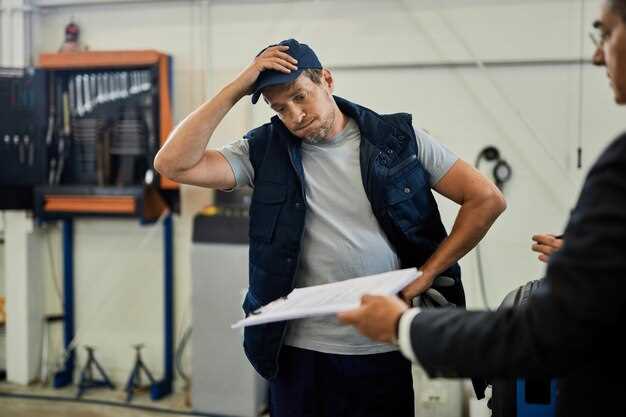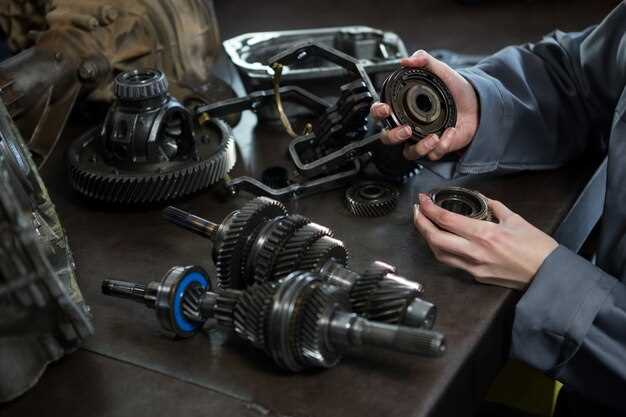
Mechanical systems are integral to various aspects of our daily lives, from vehicles to household appliances. Ensuring their proper functioning not only enhances efficiency but also prolongs their lifespan. However, mechanical issues can arise unexpectedly, leading to costly repair bills and inconvenient downtimes. Understanding how to prevent these common problems is essential for both individuals and businesses.
One of the primary ways to avoid mechanical issues is through regular maintenance. A proactive approach, including scheduled inspections and timely repairs, can help identify potential failures before they escalate. Simple tasks such as lubricating moving parts, tightening loose components, and replacing worn-out elements can make a significant difference.
In addition to maintenance, knowing how to troubleshoot common issues is invaluable. By familiarizing yourself with typical signs of malfunction, you can address problems efficiently. This article will provide practical tips and strategies to prevent mechanical failures and effectively troubleshoot when issues arise, ensuring that systems operate smoothly and reliably.
Identifying Warning Signs of Mechanical Problems

Recognizing early warning signs of mechanical issues can save time and money, preventing more significant problems in the future. An attentive operator or owner can often detect irregularities before they lead to failure.
Unusual Noises: One of the most common indicators of mechanical trouble is unexpected sounds. Grinding, squealing, or banging noises can suggest wear and tear on components such as bearings, belts, or gears. Pay close attention to the source and nature of these noises to determine whether they indicate a serious issue.
Vibrations: Excessive vibrations during operation may signal misalignment or imbalance within the machine. Equipment that starts to shake or vibrate more than usual could be nearing failure. It’s essential to monitor the vibration levels regularly and perform maintenance if issues are detected.
Leaks: Fluid leaks are often a clear sign of mechanical trouble. Oil, coolant, or hydraulic fluid escaping from machinery can indicate seal failure or damage to hoses and gaskets. Always inspect for signs of leakage as they can significantly impact performance and lead to overheating.
Temperature Changes: An abnormal rise in temperature can indicate friction, lack of lubrication, or other mechanical problems. Many machines have temperature gauges; consistently high readings may warrant further investigation to prevent damage.
Poor Performance: A noticeable decline in operational efficiency, such as reduced output or sluggish response, can indicate underlying mechanical problems. Tracking performance metrics over time can help identify when a machine is not performing as expected.
Warning Lights: Many modern machines and vehicles are equipped with onboard diagnostic systems. If warning lights illuminate on the dashboard or control panel, it’s essential to address them promptly. These systems can guide operators toward the specific issue that needs attention.
Frequent Breakdowns: If repairs become more frequent or if breakdowns happen unexpectedly, it’s a strong indication of a more profound issue. Regular maintenance and proper inspections can help prevent these occurrences and extend the life of the equipment.
In conclusion, early identification of these warning signs plays a critical role in maintaining mechanical systems. Regular monitoring and proactive maintenance can enhance reliability, leading to safer and more efficient operations.
Routine Maintenance Practices to Extend Lifespan
Regular maintenance is essential for prolonging the lifespan of mechanical equipment and preventing common issues. Establishing a routine schedule for inspections and service can significantly enhance performance and reliability.
First, always adhere to the manufacturer’s specifications for maintenance intervals. This includes changing lubricants, filters, and other consumable parts. Timely replacements prevent wear and tear and optimize the efficiency of machinery.
Second, keep machinery clean and free of debris. Dust, dirt, and other contaminants can lead to overheating and mechanical failure. Regular cleaning helps maintain optimal airflow and function of cooling systems, reducing the risk of breakdowns.
Third, check and tighten all bolts, screws, and fittings periodically. Vibration during operation can loosen fasteners over time, potentially leading to misalignment or failure. Ensuring everything is secure prevents catastrophic damage and enhances the integrity of the equipment.
Fourth, monitor and maintain fluid levels regularly. This applies to oil, coolant, and hydraulic fluids. Low levels can cause insufficient lubrication or cooling, resulting in premature wear or complete failure of components.
Fifth, implement a regular inspection program that includes listening for unusual noises and observing any changes in operation. Early detection of abnormal sounds or performance shifts can indicate underlying issues that need attention, allowing for early intervention.
Lastly, train operators on proper use and maintenance practices. Ensuring that those who handle the equipment understand the importance of following guidelines can prevent misuse and extend the machinery’s operational life.
Step-by-Step Troubleshooting for Common Mechanical Failures

Mechanical failures can disrupt operations and lead to significant downtime. A systematic approach to troubleshooting can help identify and resolve issues quickly. Follow these steps to effectively troubleshoot common mechanical problems.
Step 1: Identify the Problem
Start by recognizing the symptoms of the failure. Listen for unusual noises, observe any abnormal behavior, and check for warning indicators. Document your observations to establish a clear picture of the issue.
Step 2: Gather Information
Consult any available manuals, maintenance logs, or operation guides specific to the mechanical system in question. Understanding the design and intended operation of the equipment can provide valuable context for troubleshooting.
Step 3: Perform a Visual Inspection
Conduct a thorough visual inspection of the equipment. Look for signs of wear, damage, or misalignment. Check for loose or missing components, leaks, and signs of overheating. This step can often reveal immediate issues that require attention.
Step 4: Isolate the System
Before taking further action, ensure the system is safe to work on by isolating it from power sources or other operational systems. This step is crucial to prevent accidents and ensure safety during the troubleshooting process.
Step 5: Conduct Testing
Use diagnostic tools and sensors to test relevant components. Measure pressures, temperatures, or electrical signals as appropriate. Compare the readings to the manufacturer’s specifications, and look for anomalies that indicate where the problem may lie.
Step 6: Replace or Repair Faulty Components
Once you have identified the faulty components, decide whether to repair or replace them based on the extent of the damage and cost-effectiveness. Use original equipment manufacturer (OEM) parts when possible to ensure compatibility and reliability.
Step 7: Reassemble and Test the System
After completing repairs or replacements, carefully reassemble the system. Follow the correct order of assembly and double-check that all connections are secure. Once reassembled, reconnect power and conduct a test run to ensure normal operation.
Step 8: Document the Process
Finally, document the entire troubleshooting process, including findings, actions taken, and any parts changed. This record can assist with future maintenance and troubleshooting efforts, making it easier to identify recurring issues.
Following these systematic steps will enhance the efficiency of troubleshooting mechanical failures and help maintain optimal equipment performance.













